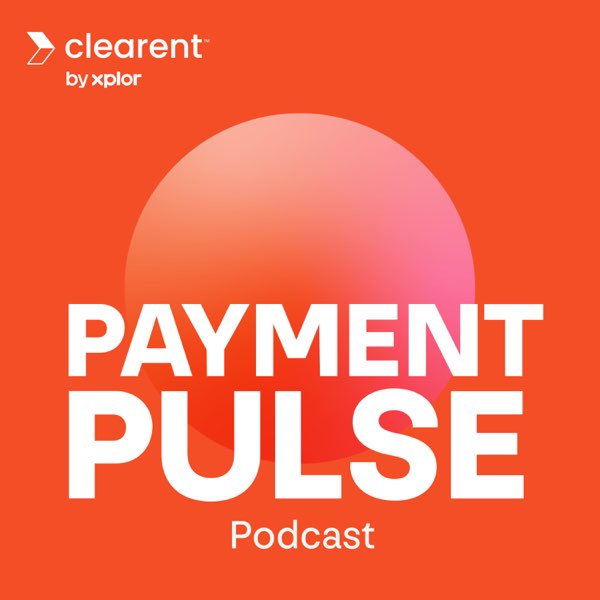
Scaling Software with Payment APIs
Payment Pulse: The Power of Social Proof: Learn how influencer endorsements, online reviews, and peer behavior shape our buying habits.
Status Spending and Luxury Psychology: Understand why consumers use high-end payment methods to signal prestige and how brands capitalize on the “Keeping up with the Joneses” mentality.
FOMO and Impulse Purchases: Explore the role of limited-time offers and BNPL services in reducing purchase friction and triggering rapid spending.
Digital Trends on Social Media: See how platforms like Instagram, TikTok, and YouTube are revolutionizing product discovery and checkout experiences.
Cultural Influences on Spending: Discover how global payment preferences vary and why adapting to local norms is key for businesses expanding into new markets.
Also Listen On:
Episode Transcript
Steve: Welcome to Payment Pulse, a podcast by Clearent by Xplor, where we have a goal of humanizing and simplifying the complex world of payments. My name is Steve, and today we are here with another guest. We are here with Ron Smith, the Vice President of Product here at Clearent, to talk about the topic scaling SaaS platforms with APIs.
Today’s episode isn’t just about how payment APIs work or their functionality. It’s really about how they’re changing the way software companies think about product development, growth, and competitive edge. As more platforms embed payments, APIs have gone from being a back-end tool to a strategic asset. They’re helping SaaS providers unlock new revenue streams, streamline onboarding, and scale faster—all without overhauling their core product or taking away from core product development.
Ron’s a fintech veteran with over 25 years of experience across merchant services, product strategy, partnerships, and platform development. He’s known for turning complex payment concepts into clear, actionable insights and helping software companies build better, more trusted payment experiences. I really enjoy our conversations. If you missed our most recent webinar with Ron, we’ll leave the link in the description—that was our PayFac as a Service myth-busting episode. Really great webinar, so definitely check it out.
Steve: Ron, how are you doing today?
Ron: I’m doing well, thanks for asking. We’re nearing the end of the second quarter already. It’s hard to believe, but we have a lot going on around the company and some pretty exciting deliveries coming out of the product and engineering teams in a matter of days. It’s nice to take a break and talk with you again on another important topic.
Steve: Appreciate you taking time out of your busy schedule and product development efforts. Lots of new things, like you said—I’m excited. New things to talk about is always fun.
Let’s start at the foundation. How would you describe the role APIs play in enabling today’s software providers to build and scale their platforms?
Ron: APIs have never been more important, especially as technology evolves at an exponential pace. APIs enable communication between different systems—sending and receiving data—which supports end users in performing all sorts of tasks in simplified ways. A key point: APIs evolve. Capabilities built on an API can increase as the API’s capabilities increase, resulting in more features and functionality.
For developers, APIs streamline development and make it easier to expand functionality as providers enhance user experiences and performance—with the goal of saving time and reducing overhead. Modern APIs foster modular innovation. They’re the foundation of software development and the most critical consideration for enabling seamless integration between diverse systems and platforms, easing the burden of building applications that simplify complex workflows. The outcome is an interconnected, interoperable ecosystem across environments.
The evolution of APIs—starting as basic information exchange—has been significantly impacted by the proliferation of the internet and, more recently, by advancements in cloud computing and microservices architecture. In short, modern APIs are built with scalability in mind and generally follow a defined API strategy of their provider. That’s an important question for software providers when embarking on a new integration or adding new services/capabilities to their platforms.
Steve: Thanks for setting the stage, Ron. I’ve broken this episode into three sections: transaction APIs, reporting APIs, and unified APIs.
Steve: For platforms managing a large and diverse merchant base, what’s the advantage of building on a single transaction API vs. managing multiple integrations?
Ron: In payments, more is not usually better. Multiple APIs/vendors/providers mean additional overhead and maintenance, an increased PCI footprint and vulnerability risk, and potential for varied or misaligned workflows—from setup and implementation to processing and reporting. There’s also the upfront investment in time and resources and the potential for varied support models and escalation paths, which complicate operational support.
When choosing a partner, explore API capabilities: understand the API itself and the supported endpoints to gauge flexibility and scalability now and over time as needs and goals change. We often work with providers juggling multiple projects, aligning to iterative or modular delivery—adding payment channels, methods, or transaction types over time. Assess the API’s interoperability with related workflows and understand future scope/effort—even if your immediate goal seems easily achievable.
Steve: From my experience, having multiple payment integrations with multiple partners also fragments revenue. You may have different revenue splits, which increases overhead and can diminish overall return. Great points.
As platforms grow (serving thousands of merchants), data gets complex. How do reporting APIs make data usable and accessible at scale?
Ron: “Data is king.” It provides insights, informs decisions, measures success, and shapes strategy. But data and accessibility can be complicated. Beyond transactional APIs, reporting APIs can serve richer datasets, providing incremental value. The first concern is what data is available and how to access it—how the API can augment data you already have and help assimilate it to reduce work and overhead once received.
At Clearent by Xplor, we pride ourselves on data standards and accessibility. We make data available via transaction APIs, our merchant/partner portals, and a reporting API with endpoints for transactions, merchant pricing, disputes/chargebacks, deposits, and statements. Knowing we had even more valuable data to offer, we rebuilt our reporting API this year to leverage a single base URL with a more standardized endpoint structure aligned directly with our new reporting suite in the partner portal.
That way, providers can get the same datasets via their preferred interface, and the API scales as we add new reports. The suite spans about 23 reports, covering portfolio-wide or single-merchant data: setup/configuration, compliance status, billing/pricing, equipment, interchange qualification, and even support tickets for merchants who contacted our help desk. And we’re continuing to deliver more data in more insightful and actionable ways—including new tooling like AI—so stay tuned.
Steve: Really exciting work. Data drives decision-making and strategy—it’s powerful.
Expanding into new regions is exciting but often means dealing with different banks, rules, and rails. How can a unified API reduce that complexity?
Ron: It should be no surprise that Xplor’s vision is a single global payments platform complemented by a universal API set. Regional nuances—vendors, rails, laws, rules, regulations, even terminology—create complexity from development through usability. Our global strategy isn’t just enabling payment acceptance in new geographies; it’s taking on the burden of managing those nuances so partners can scale faster without adding overhead or multiple processors.
Across regions, providers need onboarding, payment acceptance, transaction maintenance, reporting, and statements. Those core functions transcend borders at face value, but there’s immense behind-the-scenes variability. Meeting partners’ global ambitions means using our expertise to design a platform and API that handles the logic and manages those nuances. What might otherwise be resource-intense and extremely complicated becomes practical with Xplor.
We already operate technology and payments platforms around the globe, so we’re versed in regional flows. Wrapping that in a single API layer delivers centralization, standardization, simplification, and consistency—time savings and reduced overhead. We’ve paved a path for scalability for ourselves and allow partners to share in its benefits. It’s achievable, realistic, and exactly why we set out to accomplish it.
Steve: The unified API is what scalability looks like. Reporting and transaction APIs play a role, too—the way they’re built is critical to how they’re used. I’m excited about the work your team is doing.
This was a quicker episode—just touching a few specific questions. APIs are complex; we could go on for hours, but we wanted a focused, high-level foundation. I’m sure Ron and I—and other members of Product—will have additional conversations on these solutions.
If you missed the webinar with Ron and me around PayFac as a Service and busting 10 common myths, it’s a great, educational walkthrough of definitions and how we approach it. We’ll link it in the description.
We look forward to seeing you next week. If you have comments or questions, please leave them on YouTube or social. We want to open the conversation with you all as well. That’s it for this week’s episode—we’ll see you next week.
Article by Xplor Pay
First published: May 16 2025
Last updated: September 17 2025

